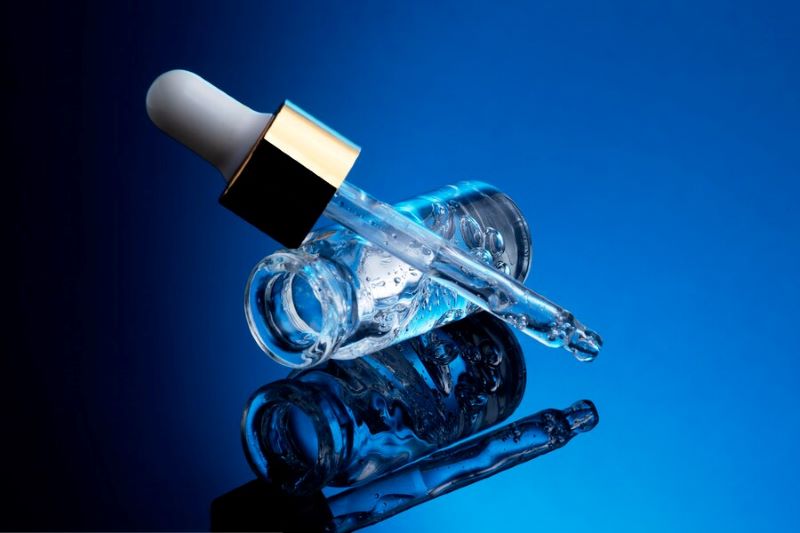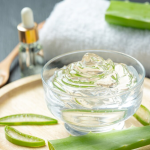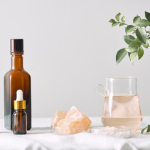Introduction to the Ingredient
Alpha Hydroxy Acids: The Sour Solution to Smooth Skin (Or Just Another Overhyped Acid Trip?)
Welcome, skincare aficionados, to the acid trip of the century! Today, we’re diving headfirst into the world of Alpha Hydroxy Acids (AHAs), those sour little wonders that promise to transform your skin from dull to dazzling. Alpha Hydroxy Acids (AHAs) are a family of water-soluble acids derived from fruits and milk sugars. Commonly found in skincare products, AHAs, such as glycolic acid and lactic acid, are renowned for their exfoliating and skin-renewing properties. But before you start slathering on that acid, let’s take a snarky scientific deep dive into what AHAs are really all about.
Alpha Hydroxy Acids: The Low pH Legends
First things first, let’s talk chemistry. Alpha Hydroxy Acids are a family of water-soluble acids that occur naturally in fruits, milk, and sugar cane. Sounds delicious, right? Well, don’t be fooled by their fruity origins; these acids mean serious business when it comes to your skin.
Exfoliation Extravaganza or Irritating Intruders?
Ah, exfoliation, the holy grail of skincare. AHAs work their magic by dissolving the bonds between dead skin cells, sloughing away the dull and revealing the radiant underneath. But here’s the kicker: while AHAs may give you that coveted glow, they can also be downright irritating to sensitive skin types. So, if you’re prone to redness or irritation, you might want to proceed with caution. Nobody wants to walk around looking like a tomato, after all.
Glycolic Acid: The Alpha Dog of AHAs
When it comes to AHAs, glycolic acid reigns supreme. Derived from sugar cane, this little powerhouse boasts the smallest molecular size of all the AHAs, making it the most effective at penetrating the skin’s surface. But don’t let its size fool you; glycolic acid packs a punch when it comes to exfoliation. Just be prepared for a little tingling sensation – or as we like to call it, the “acid tingle dance” – when you apply it to your skin.
Lactic Acid: The Milky Marvel
Next up, we have lactic acid, the darling of dairy lovers everywhere. Found naturally in milk, yogurt, and sour cream, lactic acid is a gentler alternative to glycolic acid, making it perfect for sensitive skin types. But don’t be fooled by its mild manners; lactic acid still knows how to get the job done when it comes to sloughing off those dead skin cells. So, if you’re lactose intolerant but still craving that creamy complexion, lactic acid might just be your new best friend.
Citric Acid: The Zesty Zinger
Last but not least, we have citric acid, the zesty zinger of the AHA family. Found in citrus fruits like lemons, oranges, and grapefruits, citric acid brings a refreshing burst of energy to your skincare routine. But be warned: citric acid can be a bit of a diva when it comes to sensitive skin, so proceed with caution if you’re prone to irritation. Nobody wants to feel like they’ve been slapped in the face with a lemon, after all.
How Does it Work?
AHAs work by gently exfoliating the outer layer of the skin, promoting the shedding of dead skin cells. This process reveals newer, smoother skin underneath, contributing to a more radiant complexion. Additionally, AHAs stimulate collagen production, enhancing skin firmness and reducing the appearance of fine lines.
Key Benefits
- Exfoliation: AHAs effectively remove dead skin cells, promoting a brighter and more even skin tone.
- Collagen Stimulation: The exfoliation induced by AHAs encourages collagen synthesis, aiding in the reduction of fine lines and wrinkles.
- Hydration: AHAs can improve skin hydration by removing the barrier of dead skin cells, allowing better absorption of moisturizing products.
- Hyperpigmentation: AHAs can fade dark spots and hyperpigmentation, resulting in a more even complexion.
Usage in Beauty Products
AHAs are commonly found in various beauty products, including cleansers, toners, serums, and peels. Their versatility makes them suitable for addressing a range of skincare concerns, from dullness to signs of aging.
Safety and Precautions
While AHAs offer numerous benefits, it is crucial to use them with caution. High concentrations or frequent use can lead to skin irritation, redness, and increased sensitivity to the sun. Individuals with sensitive skin should start with lower concentrations and gradually increase usage.
Compatibility with Other Ingredients
AHAs can complement a variety of skincare ingredients, but caution is necessary when combining them with other active ingredients like retinoids or vitamin C. Consultation with a dermatologist can help determine the most effective and safe combinations for individual skincare routines.
Scientific and Research Findings
Scientific studies consistently support the efficacy of AHAs in skincare. Research has demonstrated their ability to improve skin texture, reduce hyperpigmentation, and promote collagen synthesis. However, individual responses to AHAs may vary, emphasizing the importance of personalized skincare routines.
Common Variants or Derivatives
Common variants of AHAs include glycolic acid (derived from sugar cane), lactic acid (derived from milk), citric acid (derived from citrus fruits), and malic acid (derived from apples). Each variant offers unique benefits and is used in different skincare formulations.
Considerations When Using the Product
- Sun Protection: AHAs can increase sun sensitivity, so regular use of broad-spectrum sunscreen is essential when incorporating them into your skincare routine.
- Start Slow: If you’re new to AHAs, start with lower concentrations to allow your skin to acclimate, and gradually increase usage if well-tolerated.
- Moisturize: Maintain skin hydration by using a moisturizer to counteract potential dryness or irritation.
References
- Ditre, C. M., Griffin, T. D., Murphy, G. F., Sueki, H., Telegan, B., Johnson, W. C., … & Voorhees, J. J. (1996). Effects of alpha-hydroxy acids on photoaged skin: a pilot clinical, histologic, and ultrastructural study. Journal of the American Academy of Dermatology, 34(2), 187-195.
- Rawlings, A. V., & Lombard, K. J. (2012). A review of the extensive skin benefits of mineral oil. International Journal of Cosmetic Science, 34(6), 511-518.
Conclusion
Alpha Hydroxy Acids are potent allies in achieving a smoother, brighter complexion. When used wisely, they can address a variety of skin concerns and contribute to overall skin health. Tailoring their usage to individual needs and following best practices ensures a positive experience with AHAs in your skincare journey.
Frequently Asked Questions (FAQs)
- Can AHAs be used daily? Depending on your skin type and the concentration of AHAs, daily use may be suitable. However, it’s advisable to start with less frequent application and adjust based on skin response.
- Are AHAs suitable for sensitive skin? AHAs can be suitable for sensitive skin, but it’s essential to start with lower concentrations and monitor for any signs of irritation.
- Can I use AHAs and retinol together? While possible, combining AHAs and retinol requires careful consideration of concentrations and potential skin sensitivity. Consultation with a dermatologist is recommended for personalized advice.
So, where does that leave us in the great AHA debate? Are these sour solutions the secret to smooth skin, or just another overhyped skincare trend? Well, the truth lies somewhere in between. AHAs can be incredibly effective at exfoliating the skin and revealing a brighter complexion. But they’re not without their risks, especially for those with sensitive skin.
In the end, whether you choose to hop on the AHA bandwagon or not is entirely up to you. Just remember to start slow, listen to your skin, and always wear sunscreen – because nothing ruins a good acid trip like a sunburn. And if all else fails, there’s always chocolate. After all, who needs smooth skin when you can have chocolate instead?



